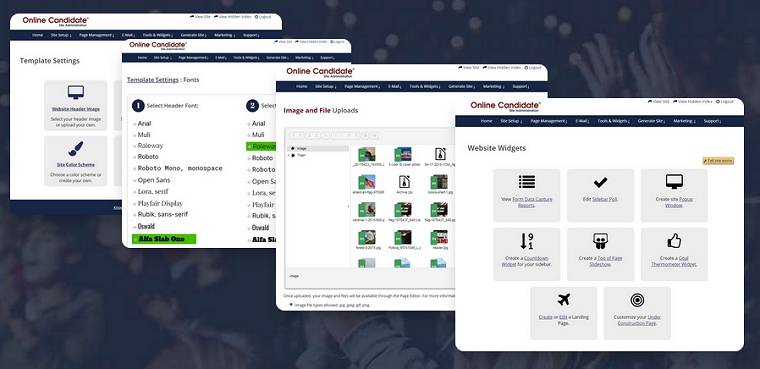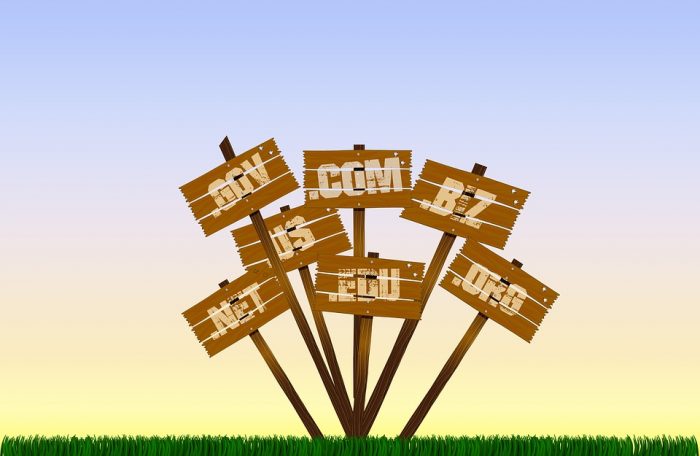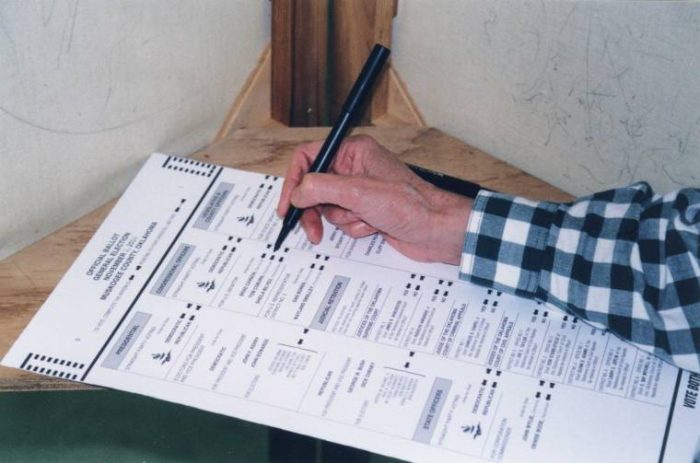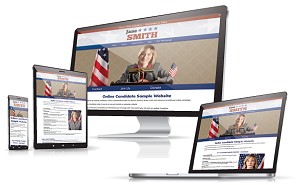Building a political website for your campaign can be a daunting task, but it’s an important part of your digital strategy. Your campaign website is a vital tool for educating constituents about your values, platform, and key issues.
Today, a website is the online hub for political organizations of all sizes. The first presidential websites were launched in 1996. But it took almost two decades for local campaigns to take building a political website mainstream. Today, all serious candidates and organizations have embraced the internet. It is a major source of donations and plays a large part in shaping voter’s opinions.
In this post, we will go through the process of building a website for a political campaign. We will work our way step-by-step through the process.
Table of Contents:
- Why Do You Need a Political Campaign Website?
- Should You Create a Campaign Website Yourself?
- Political Domain Names and Hosting
- Free Website Hosting – A Warning
- Designing Your Campaign Website
- Creating Effective Campaign Website Content
- Compelling Images and Graphics
- Search Engine Optimization
- Setting Up An Online Donation System
- Setting Up An Email List
- Tying It All Together
- After The Election – What Now?
- Conclusion
Why do you need a political campaign website?
A campaign website is a trusted hub for processing online donations, sharing a candidate biography, posting press releases, and providing voter registration information. It’s best to start building your website early in your campaign.
Building your website is something you want to do early when you begin your political campaign.
A political campaign brands itself with its selection of colors, fonts and logos.
A great election website engages voters. It is easy to navigate, and acts as a powerful fundraising tool. Combined with a smart online strategy, it can make the difference between an election victory or loss.
Should you create a site yourself?
You are running for office. You are not in this to learn the ins and outs of web technology.
Unless you’re skilled in web development, it’s more efficient to seek professional help. Learning the technicalities of website creation, like content management systems and domain registration, can be time-consuming and detract from focusing on your campaign’s messaging and strategy.
Heck, even registering a domain name can be a confusing experience for some people.
Most of our clients do not have a lot of technical experience. Their skills are mostly limited to email and Microsoft Word. They don’t know the difference between a CMS and GUI.
Yes, an individual can register a domain and cobble together a site. But for a newbie, that’s going to hours and hours of time. Time that’s better spent on activities that help you win your election.
A well-designed website should reflect your campaign’s unique character and branding.
In this post, we will go through the process of creating a website for a political campaign. We will also explain how Online Candidate can help you through each step of the process.
Political domain names and hosting
Your domain name represents your campaign online and in printed materials, so choose it wisely. Simple, easy-to-remember names work best. If your name is John Smith, go with johnsmith.com or the name that will appear on the ballot. If your name is already registered, try a variation (eg. electjohnsmith.com or votejohnsmith.com).
Most registrars allow you the option of a ‘private’ registration. This prevents the registrant’s name, address, email address, and phone number from being found online. Private registration helps reduce spam and, increasingly, phone solicitations. This is an option worth considering if you value privacy.
A free .com domain name is included with each Online Candidate site. You have a choice of domains, including .com, .org, .net, and specialized domain extensions such as .republican and .democrat. The domain is registered in YOUR name so you are in control if want to transfer the domain or change ownership.
A warning about free website hosting
Although the price is attractive, going with a free website hosting company is not a good idea. You may be forced to display outside ads on your website. Server space and bandwidth will be limited. The web host may have little customer support, and they may close shop without warning.
Free website hosting often lists sites as a subdirectory or subdomain of the host’s own domain. That makes your domain something like “yourcampaignname/thehostname.com” or “thehostname.com/yourcampaignname.” You may not be able to use your own custom domain – unless you upgrade. And then your hosting isn’t free anymore.
In the meantime, any links you may have from news sites or social media point still point to the host website. That can cause confusion in branding going forward.
Locked-in domain names. It is often difficult – if not impossible – to move a domain name if registered through a free service. We know of two very large services that make it nearly impossible for non-technical people to transfer or move their domains. If you decide you want to host elsewhere, you may find that you are ‘stuck’ and unable to transfer the domain. Sometimes registering a new domain is the only solution.
Online Candidate websites include hosting, email accounts and the SSL security. Your hosting and content management system is automatically set up when you order. Your domain name is also registered in your name, so you have control over it going forward.
Designing your political campaign website
Political sites, especially in the United States, tend to have a certain ‘look’ to them. The color scheme tends to run along red, white and blue. An image of the candidate is often prominent in the header. Best practices include frequent calls for visitors to donate and lend support.
- The colors of your website should be consistent with your other campaign material.
- Political colors do not have to be limited to the traditional red and blue (in the US).
- Be sure the site colors and logo match your print materials.
- Consistency builds familiarity.
A responsive website renders well on desktop computers, mobile phones, and tablets. Mobile internet usage is now greater than desktop internet usage. A proper political website design must provide a great user-experience across different devices and screen sizes. Google considers responsive design as an industry best practice.
Using templates to make the design easier
Most website builders include a way for users to design their own website. For the most part, they are template-based. Political website templates are pre-designed elements that lays out the main structure of a web page (such as a header or footer). It makes web design a lot easier for designers. Templates or templating systems are generally tied in to a content management system (CMS). This allows users to add their own text content and images to create a campaign website.
Our Monthly Option Website Package includes a built-in template system. Choose from politically-inspired header graphics, color schemes, fonts and text sizes to create a unique look.
Custom political web design to get the look you want
For website to design to be considered customized, a site must incorporate a brand’s specific design requirements. For a political candidate or organization, a brand includes a graphic logo, a candidate photo, custom fonts and color elements. You can achieve a large amount of customization with a template. But a custom design requires a graphics program like Photoshop to create various site elements.
Online Candidate political websites includes a Custom Design. We design a website header with a campaign’s colors, logo, background and candidate head shot. We also modify the site colors, font and background for a professional look suitable for any political campaign. (See design examples of our political websites.)

Creating effective political website content
Your website should include key sections like Home, Biography, Issues, Endorsements, News, Donation, Volunteer, Events, Voter Registration, and a Contact page. The content should be well-written and checked for grammar and accuracy. A great political website should inform (and maybe even entertain) the voters:
Make sure the content is clear, engaging, and regularly updated to reflect campaign developments. Be sure to include dynamic calls-to-action and visual storytelling to connect with your visitors. Some campaigns today are using AI tools for writing issue-related content, candidate biographies, and calls to action.
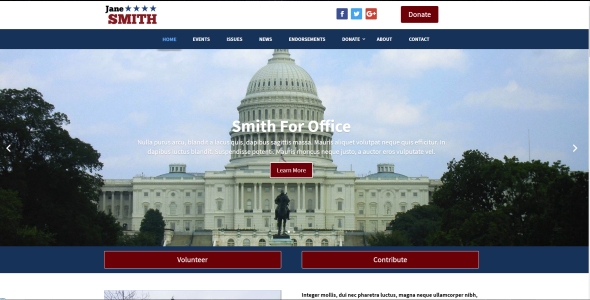
Use compelling images and graphics
Images and graphics can be just as important as your copy. Use compelling visuals that support your campaign’s message. Having photographs and images ready at the start makes the website creation process go smoother. Pictures people and faces attract user attention. If you are hiring a designer, they can make your images web-ready for desktop and mobile display.
Incorporate optimized images and graphics to enhance the visual appeal and convey your campaign’s message effectively. Images should be web-ready and appropriately sized for both desktop and mobile display.
Online Candidate websites include a built-in library of images to use within your content. Don’t have the time or inclination to set up your own content? The Initial Content Setup addon can be ordered if it is not included in your site package.

Search engine optimization is important
Optimize your website for search engines with the proper use of keywords, metadata, and also link out to your social media accounts. This helps ensure that your site ranks well in candidate-related searches.
Setting up an effective online donation system
Online fundraising is a powerful tool to bring in campaign donations. Without it, you are at a serious disadvantage. Accepting funds online can help you target a wider audience and tap into a greater quantity of small donations. People who hesitate to write a check (and who writes checks anymore?) are often more inclined to click and contribute online.
Online donations are a key component of campaign fundraising. Integrate a secure and user-friendly donation system on your website. Choose a service that offer low transaction fees and support multiple payment channels.
Establish your payment system early. To accept online contributions, you’ll need a campaign bank account and verification of your organization’s non-profit status. After that, you’ll need to comply with all legal requirements for collecting donations.
Regardless of how you raise funds, your campaign must comply with all financial legal requirements. You’ll need to collect certain donor information, and there will also be a legal limit on individual contributions. You should also note on your donation pages that political contributions are not tax-deductible.
Online Candidate websites can tie in with PayPal, Raise The Money, ActBlue, Anedot, or whatever fundraising service you choose.
Related: Comparing Political Donation Platforms – Our Recommendations
Setting up an email list to reach voters and supporters
The most effective way to get a quality email list is to build one yourself. You should start this as early as possible. Initial addresses can come from personal contacts, event signups, or through donation and volunteer forms (with a checkbox for ‘add to email list’).
Choose an email service that suits your campaign’s size and needs, focusing on personalization and segmentation for effective communication. For smaller campaigns, a free or low-cost solution like MailChimp might be enough. For lists with a large number of subscribers, a paid or higher-end option may be necessary.
Tying the elements together
A website should not stand alone. Effective political candidates take advantage of all that the web has to offer. With a website, a donation system and an email marketing setup, you have all the basics covered. Use analytics tools to track website performance and user engagement.
Before your site goes live, proofread all your site content (and have a few others proofread, too). Make sure all the forms on your website work properly. Test your email signup form and sign yourself up to receive updates.
After the election – what now?
After the election, you should post a final update. Win or lose, you should thank your friends and supporters for their help – they deserve it. Also, provide information on future campaign plans or activities. Consider keeping your site active for long-term engagement and future campaigns.
Conclusion
Building a political campaign website might seem like a huge job, but with the right approach, it’s manageable. Our expertise and tools make it accessible for candidates of all technical levels.
Hundreds of politicians and elected officials use Online Candidate every election cycle. We provide affordable political website packages and marketing services.
We hope that we can help you this election season!

